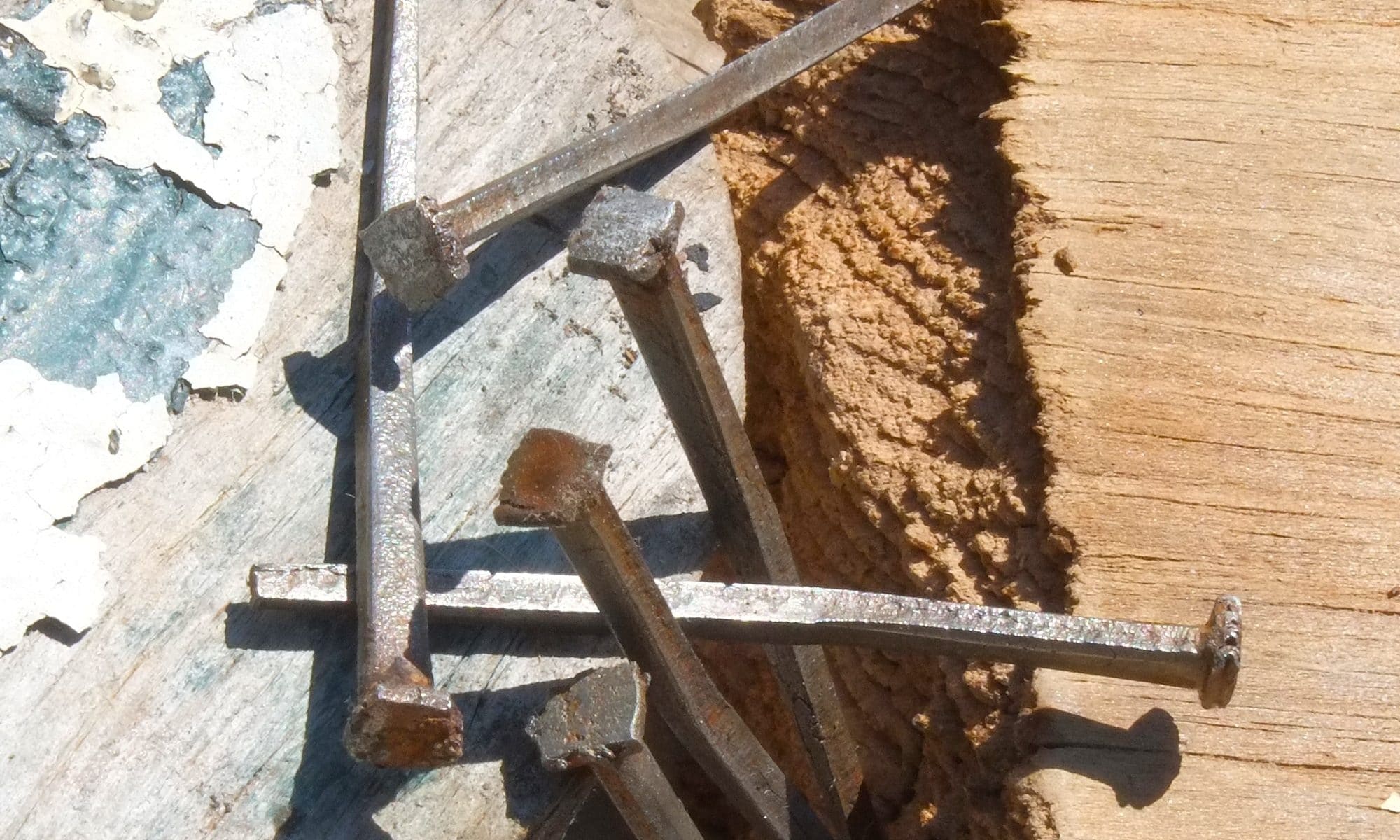Work starts inside, only because it’s really cold outside and the ground has an 8″ layer of snow on it. We still haven’t finished our excavation of the sewer pipe but frozen soil is like concrete, so the next warm spell we will be out back digging.
A week or so ago we thought that we ought to rescue all the old doors that had been stored in the garage rafters. As well as the walls of the garage, the roof is also collapsing in parts. It has numerous leaks and the biggest hole so far is about 2′ square. Suffice to say the door weren’t being stored in an ideal environment. After pulling them down all of them were wet and a lot of them had soil on them. We did brush them down and apart from warping and sagging most of them looked salvageable.
Because all the internal structure of the house has been changed over the decades and more recently has been ripped out, we will have to figure out where these doors used to belong. One easy one was a large thick paneled door which looks like it might of been an exterior door. Our current backdoor is a modern steel door, which was about a foot shorter than the door in the garage, then we noticed the plywood panel above it and realised a larger door had been there originally. We measured the space and it looks likely that we have found our old back door 🙂
Aimee spent most of Saturday stripping the paint off it and good progress was made. Note that we now have some decent LED overhead lights which make work so much easier than having blinding spotlights. We are using heat guns and because these are old doors, lead paint is certain, hence the respirators. We are using 3M NOSH P100 filters which should be adequate.
I continued the work on Sunday and pretty much finished off all the main timbers. As for the insert panels, we will replace these, the large bottom panels weren’t original and were cheap ply, hence why I removed them. The top panels were original, but we would like to replace these with security glass, possibly with a decorative acid etch. The trim I can replace with new mouldings.
In case you ever wondered why doors have panels, it was to combat the contraction and expansion of wood. The wooden panels you see on old doors aren’t nailed or glued, rather they are floating and have insets into the main door members. On these particular doors there is about 1/4″ play in any direction on the top panels (this is after I have removed the old mouldings etc).
Too much info but the following expansion/contraction information is there, somewhere, probably.
To do a decent job of these door I will need to disassemble them further as I would like to replace the missing panels with some quality ply that floats like the original panels. For those that don’t know ply, due to it’s cross grain structure, has minimal expansion/contraction. Similar products like MDF have even less expansion/contraction and are often referred to as dimensionally stable (just in case you hear that expressions), assuming they are kept dry.
Here is our progress so far. You will note that our 4×8 work table (using two Toughbuilt saw horses) has fencing all around it. This was something I saw on Youtube where someone was removing lead paint, it basically keeps all of your scrapping on the table so they can be disposed of safely. For our table we have 2×4 all around, beautifully screwed in place by Aimee and they work great. The blue masking tape is to protect us from splinters.
